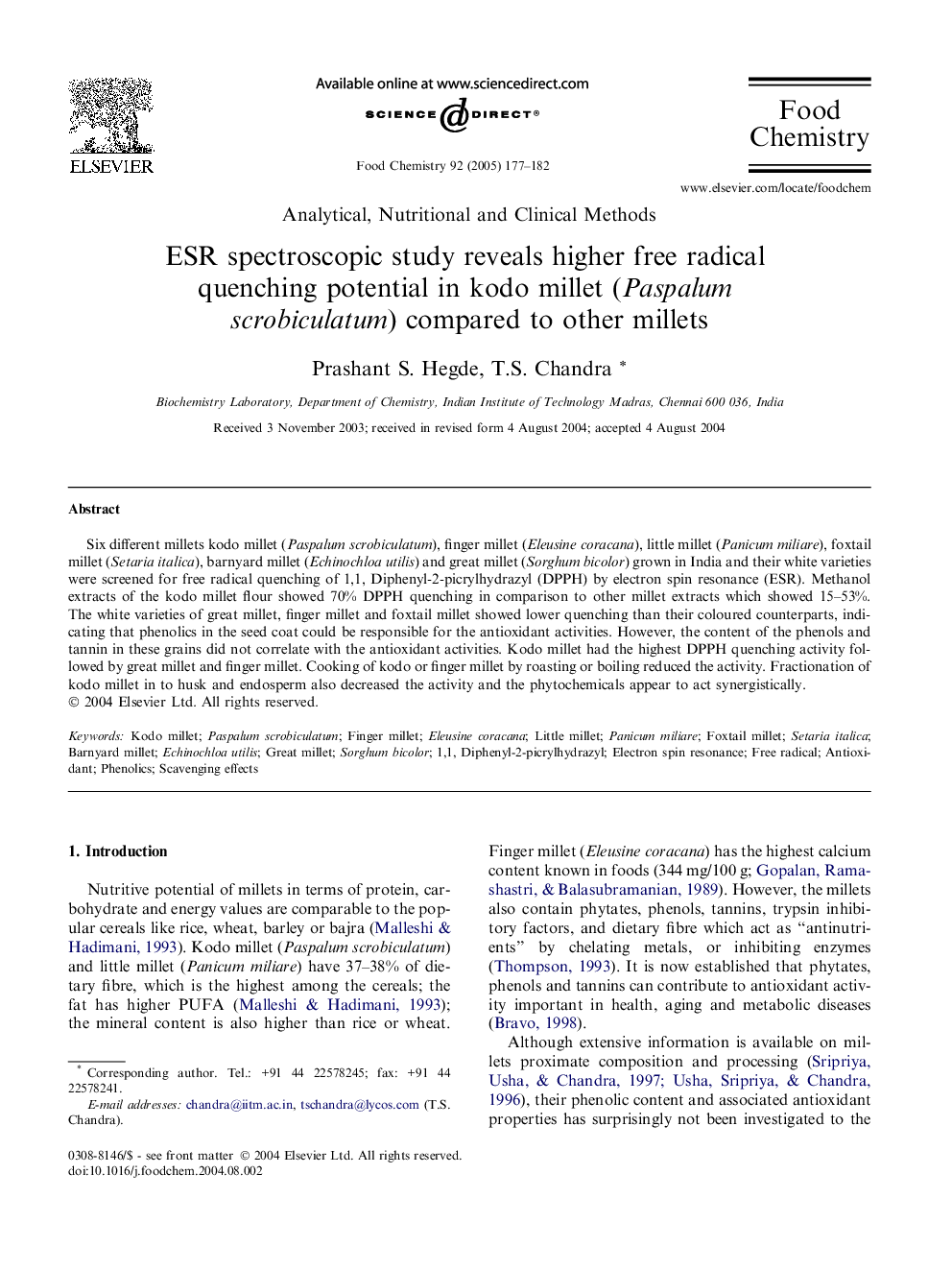| Article ID | Journal | Published Year | Pages | File Type |
|---|---|---|---|---|
| 10544408 | Food Chemistry | 2005 | 6 Pages |
Abstract
Six different millets kodo millet (Paspalum scrobiculatum), finger millet (Eleusine coracana), little millet (Panicum miliare), foxtail millet (Setaria italica), barnyard millet (Echinochloa utilis) and great millet (Sorghum bicolor) grown in India and their white varieties were screened for free radical quenching of 1,1, Diphenyl-2-picrylhydrazyl (DPPH) by electron spin resonance (ESR). Methanol extracts of the kodo millet flour showed 70% DPPH quenching in comparison to other millet extracts which showed 15-53%. The white varieties of great millet, finger millet and foxtail millet showed lower quenching than their coloured counterparts, indicating that phenolics in the seed coat could be responsible for the antioxidant activities. However, the content of the phenols and tannin in these grains did not correlate with the antioxidant activities. Kodo millet had the highest DPPH quenching activity followed by great millet and finger millet. Cooking of kodo or finger millet by roasting or boiling reduced the activity. Fractionation of kodo millet in to husk and endosperm also decreased the activity and the phytochemicals appear to act synergistically.
Keywords
Related Topics
Physical Sciences and Engineering
Chemistry
Analytical Chemistry
Authors
Prashant S. Hegde, T.S. Chandra,
